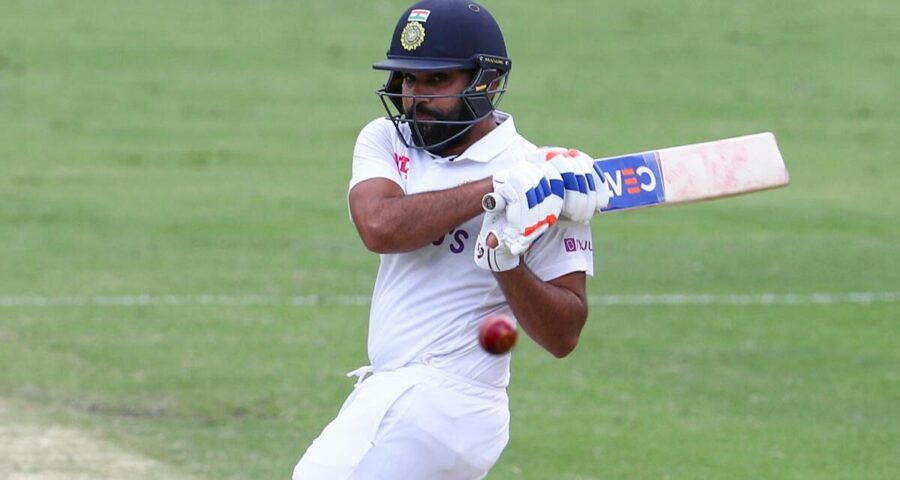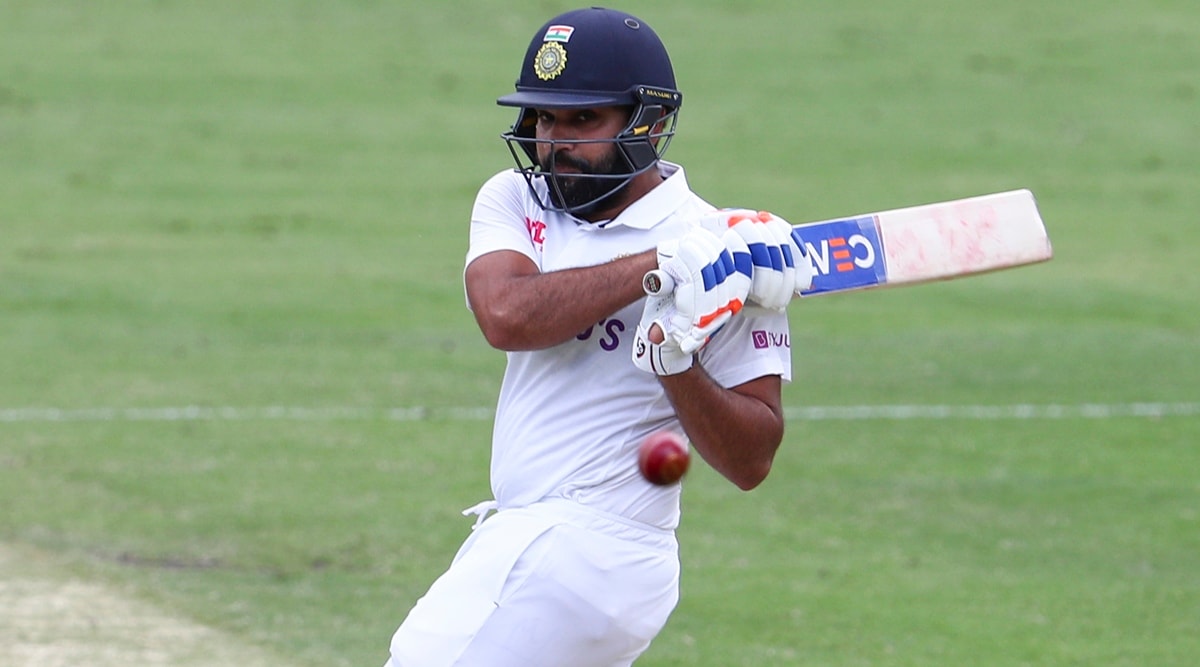Rohit Sharma was in great touch and looked in total control before he engineered his own downfall.
There comes a point when a Rohit Sharma Test innings starts to feel like Rohit Sharma’s Test career: rich in promise, low on substance. The signature Sharma Test innings looks other-worldly when it starts. It feels exciting, even ethereal, as if something special or significant is about to unfold. Then incomprehensibly, he contrives to self-destruct. There is no better word to describe it — not indiscretion or misjudgement or even brain-fade.
Some of the strokes he essayed on Saturday at the Gabba left the audience speechless, once again. In their splendorous beauty. The stroke he got out to also left the audience speechless. In its splendorous banality. It was the best Sharma has looked in this series, yet it was also the worst.
Till the 73rd ball of his 44, he was batting like a dream. Expressive, efficient and elegant. Every minute element of his batting — judgement, stroke-selection, reflexes, response, foot movement — had synchronised to produce a delectable melody. Before he struck one falsetto note that destroyed the building crescendo.
Banal expression
To find a reason, or rhyme, for the stroke is a futile exercise. His own explanations went like this: “I like to put pressure on the bowler once I am in and that is my role in this team, to keep putting pressure on the bowlers. Run-scoring has been slightly difficult for both the teams so someone needs to put their hand up and think about how to put pressure on the bowlers.”
In embracing such an approach, Sharma was resigned to the risk it entailed. “In doing that, there is a chance of making mistakes but you should be ready to accept that. It was a plan so I actually have no regrets about playing that shot,” he said.
But wait, is it not a five-day game? The first innings, when he had done enough of wresting the initiative from the bowlers. Now was the time to knuckle down.
How it happened
Instead, he jumped out of the crease to Nathan Lyon. For no reason. There were no roughs or cracks anywhere in his vicinity to necessitate such a response. The ball was not turning, nor was it bouncing awkwardly. Lyon was not flighting the ball or make it drift. So insipid was the Aussie off-spinner that Cheteshwar Pujara was grinding him for singles without fuss. Sharma himself had cut him for a boundary in the same over. Maybe, he wanted to unsettle Lyon, before he got into rhythm. Maybe, it was just a rush of dopamine. Maybe, it was a feeling of infallibility. Maybe, it was just his ego. Sharma likes to dictate matters and doesn’t like being dictated to. But in the fear of being dictated to, he invited self-destruction.
Having jumped out of the crease, he could not reach the pitch of the ball. Alright, his wonderful hands could still propel the ball into the trademark confetti seats of the Gabba. But with the trajectory of the ball being towards the leg-side, he couldn’t quite free his arms. Could he have changed the stroke and looked to defend? It would have looked tame, but he could have protected his wicket. Even if he had missed the ball, it would have hit his body. It was flattish and body-bound. But Sharma is not someone to recede from a challenge.
Maybe he was so deluded with his own sublime touch that he thought he could get adequate connection and elevation to elude the fielders lurking at deep mid-wicket and mid-on, an expanse vast enough for Marnus Labuschagne to accomplish an all-run four on Friday. He also discounted the well-worn convention of shutting shop before an interval. The tea break was near, and the billowing dark clouds were not too far away from tearing down.
Repent at leisure
But for that shot, Sharma might have a more peaceful cup of tea or a sounder sleep. Instead, he is plighted to rue and pine over the momentary lapse, destruction entirely of his own design. He was equally inconsiderate to the delicate balance of the match as well as the series. It came just at the moment the Australian bowlers were getting a trifle anxious and fidgety. Their best-laid plans seemed to hit a dead end, and their best bowler, Pat Cummins was being systematically defused by Sharma. Two checked-drives — one apiece of Cummins and Cameron Green — were the most graceful strokes one would ever cast eyes on a cricket field. Just a faint twirl of the wrists at the micro-second the ball touches the blade. Every sinew un-flexed, the impact almost soundless. Sharma always makes batting look easy, but never this easy.
Then to get out attempting a horrendous stroke befuddles as much as it boggles the head. It made even his pull shot in the second innings in Sydney look more excusable, even dignified. At least, it was an instinctive stroke, he found decent connection and was just unfortunate that he holed out to the lone prowler at deep square leg. What’s more frustrating than a technical glitch – all batsmen at some point in time have to address one flaw or the other, or a mental vulnerability – is a batsman gift-wrapping his wicket. Wasting talent is inexcusable than having no talent at all. Not once or twice in his career, but repeatedly, as if he cannot take the hurt of a bowler anymore. Sharma seems to tell the bowler: ‘Boss, I can choose my own weapon of dismissal, you don’t need to bother.’
Not the first time
But Sharma’s overseas expeditions are fast becoming an unending reel of such self-destructive moments. When he was the master of his own fate, but humbly surrendered the blessing. It’s perhaps the difference between a batsman who plays like a great and a batsman who is great. It’s plainly the difference between Sharma and Virat Kohli. The power of discretion, the awareness of not just one’s own game but the situation, and beyond it the unquenchable thirst to score big runs. Not just drive and desire, but the sheer determination that distinguishes the mortals from the immortals. The knowledge that one can play a particular shot, and the wisdom that one need not play that shot in a particular period of the game, against a particular bowler.
Great Test careers are not only built on the strokes one can play, but also those one doesn’t play. There are times when even the percentage shots have to be eschewed. Like Kohli suppressing his own and not attempting cover-drives against James Anderson in Birmingham; or like Sachin Tendulkar during his epic on self-denial in Sydney, the 241 not out. The shot that Sharma chose to perish was not even his staple shot. It seems a ghost shot in hindsight.
Besides, Sharma is no longer a talented 20-something youngster who could be afforded the allowance of time. He is 33, played 33 Tests, a white-ball great, multi-title-winning captain in the Indian Premier League, a terrific captain too. A cricketer of ideas, strokes, yet unfulfilled at the highest level. It is an elegiac strain of his career, but an elegy almost entirely of his own composition.
Source: Read Full Article


